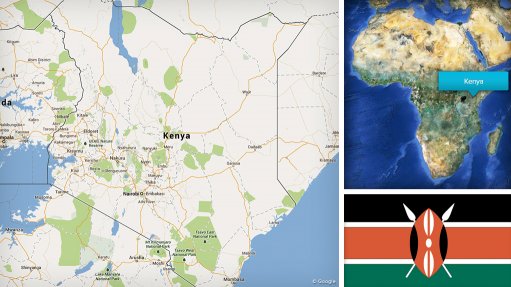Choosing the Correct Bitumen Membrane
This article has been supplied as a media statement and is not written by Creamer Media. It may be available only for a limited time on this website.
Bitumen has been a popular roofing material choice for thousands of years, and with good reason. The benefits of the sticky substance include versatility, durability, and cost-effectiveness. Above all, however, bitumen is highly waterproof, which makes it an ideal system for roofing projects.
The Sika Group has not been around for thousands of years, but they do have over a century’s worth of waterproofing experience. The chemical giant also recently acquired a majority stake in Index Construction Systems and Products – a leading manufacturer of roofing and waterproofing systems near Verona, Italy. Index is known for its superior range of quality bitumen membrane solutions, and the resultant combination of products allows Sika to become a comprehensive, full-range supplier of cutting-edge technologies.
Whether you are an architect, roofing applicator, or anyone involved in selecting bituminous roofing, Sika is perfectly placed to help you choose the perfect product, however, there are several factors to be taken into consideration when choosing a bitumen membrane:
1. Where will the product be supplied?
Temperature, exposure, and local weather should be factored in when selecting the type of compound type, be it elastomeric, plastomeric, elastoplastomeric, or oxidized bitumen.
2. What is the intended use?
The surface of the membrane is chosen according to where and how it will be applied. Typically, smooth surfaces such as talc, sand, and PE foil are indicated for ballast systems, or as a base sheet in a multi-layer system. Covered membranes such as granulated surfaces, on the other hand, protect the compound and can be used as an exposed layer.
3. What are the requirements?
Performance requirements must be provided to select the reinforcement – be it polyester which increases strength and elongation, glass fibre which increases dimensional stability, or aluminium which works as a vapour barrier. The type of reinforcement also defines the system build-up and whether the membrane should be applied in a single or double layer.
4. What is the life expectancy?
Aging tests are strongly recommended. A good quality indicator is the bitumen membrane's flexibility at low temperatures. The lower the flexibility, the higher the durability due to the volume and quality of polymers. Additional tests to check the thermo-oxidization are also advisory.
5. Are there any other limitations?
Each project possesses unique requirements or limitations, which could include fire performance, local approvals, certifications, required anti-root materials, and safety considerations during the application process. Each should be assessed individually, and the best solution obtained prior to installation.
Once these project needs have been specified, there are a few key variables of bituminous membranes that require consideration to ensure an appropriate system is utilised:
Cold flexibility
The flexibility of the bitumen membrane at lower temperatures is an important indicator of quality because it is directly related to weather conditions and the life expectancy of the membrane.
Reinforcement
Responsible for mechanical properties such as strength (tensile force), elongation, and tear-and-shear resistance, reinforcement value is a critical component of the bituminous membrane. These values should be in accordance with the features of the building to ensure resistance against movement and applied loads. Some of the most popular reinforcement materials include glass fibre, glass fleece, aluminium, non-woven polyester, and polyethylene foil, all of which are available in the Sika Index bitumen range.
Top Surface
The Index range includes both smooth and self-protected surface options. Smooth surface examples include polyethylene foil, sand, Talc, and HDPE. These surfaces ensure bonding of the overlying layer and would be used primarily for non-exposed roofs, below-ground applications, and as the under or immediate layer in multi-layer systems.
Examples of self-protected surfaces, on the other hand, are granules, aluminium, and geotextiles. These surface options protect the membrane against UV rays and would be best used on exposed roofs and for the upper layer in multi-layer systems.
Whatever decision is made regarding the perfect bitumen membrane for a particular project, one thing is certain. Bitumen membranes remain a significant component of waterproofing solutions so long as bitumen continues to be a firm favourite roofing solution.
And with over 100 years of waterproofing experience, and a proven and innovative product range behind them, there’s no reason why you shouldn’t choose Sika as your preferred waterproofing partner.
Comments
Press Office
Announcements
What's On
Subscribe to improve your user experience...
Option 1 (equivalent of R125 a month):
Receive a weekly copy of Creamer Media's Engineering News & Mining Weekly magazine
(print copy for those in South Africa and e-magazine for those outside of South Africa)
Receive daily email newsletters
Access to full search results
Access archive of magazine back copies
Access to Projects in Progress
Access to ONE Research Report of your choice in PDF format
Option 2 (equivalent of R375 a month):
All benefits from Option 1
PLUS
Access to Creamer Media's Research Channel Africa for ALL Research Reports, in PDF format, on various industrial and mining sectors
including Electricity; Water; Energy Transition; Hydrogen; Roads, Rail and Ports; Coal; Gold; Platinum; Battery Metals; etc.
Already a subscriber?
Forgotten your password?
Receive weekly copy of Creamer Media's Engineering News & Mining Weekly magazine (print copy for those in South Africa and e-magazine for those outside of South Africa)
➕
Recieve daily email newsletters
➕
Access to full search results
➕
Access archive of magazine back copies
➕
Access to Projects in Progress
➕
Access to ONE Research Report of your choice in PDF format
RESEARCH CHANNEL AFRICA
R4500 (equivalent of R375 a month)
SUBSCRIBEAll benefits from Option 1
➕
Access to Creamer Media's Research Channel Africa for ALL Research Reports on various industrial and mining sectors, in PDF format, including on:
Electricity
➕
Water
➕
Energy Transition
➕
Hydrogen
➕
Roads, Rail and Ports
➕
Coal
➕
Gold
➕
Platinum
➕
Battery Metals
➕
etc.
Receive all benefits from Option 1 or Option 2 delivered to numerous people at your company
➕
Multiple User names and Passwords for simultaneous log-ins
➕
Intranet integration access to all in your organisation




















